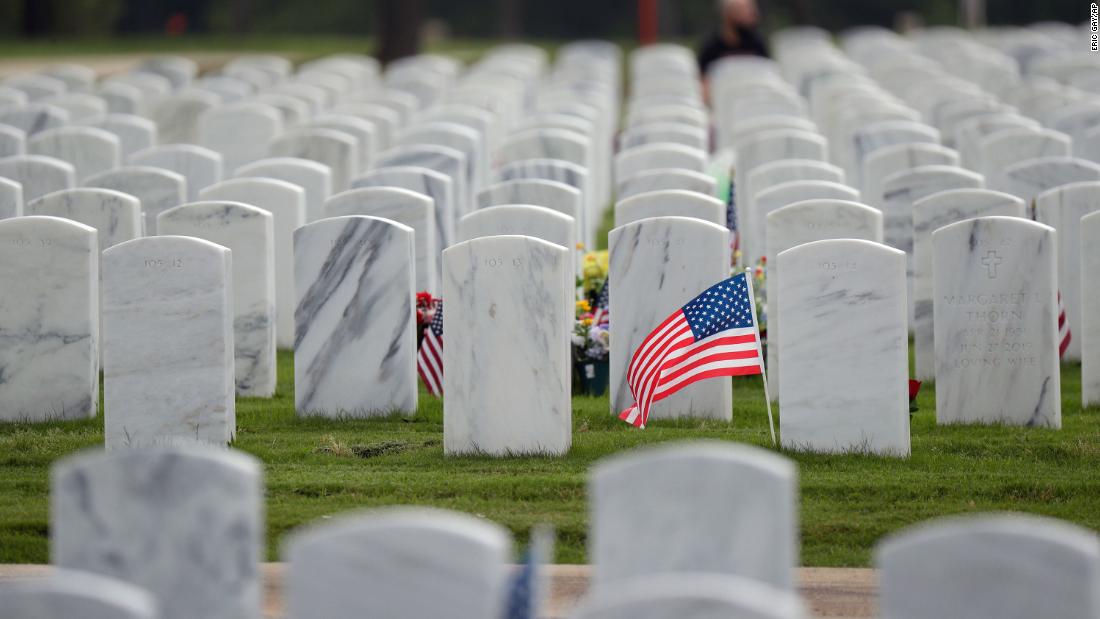
After months of petition, the headstones were removed and replaced on Wednesday by Veterans Affairs officials. The tombstones were replaced by standard-themed governmental tombstones inscribed with the name, rank, affiliation, and date of death of the deceased.
In addition to the two San Antonio graves, a tombstone in the Fort Douglas Post cemetery in Salt Lake City features an iron cross with an inscribed swastika. Paul Eilert bought the headstone of his prisoners of war after he died in 1944 with money from his 50 cents a day, according to the VA.
Fort Sam Houston National Cemetery contains remains of prisoners of war from eight camps that operated in Arkansas, Louisiana, Oklahoma, and Texas, including Bowie Camp, Texas, where Kafka and Forst were originally buried.
According to the VA, the original headstones of Kafka and Forst were probably altered between their placement in the camp between 1943 and 1946-1947, when the remains and headstones were moved to Fort Sam Houston National Cemetery and added the registration.
Earlier this year, members of Congress asked federal officials to remove or modify the gravestones in two national cemeteries containing swastikas.
In a May 25 letter to Veterans Affairs Secretary Robert Wilkie, the House lawmaker group wrote that allowing gravestones “with symbols and messages of hatred, racism, intolerance and genocide is especially offensive to all the veterans who risked and often lost. their lives defending this country and our way of life. “
“It is also a stain on the sacred ground where so many veterans and their families rest,” lawmakers wrote. “Families visiting their loved ones, who are buried in the same cemeteries with the Nazi soldiers they fought against, should never be confronted with antithetical symbols of hatred for our American values.”
Tombstones have been standing for decades
The tombstones have been kept in cemeteries for decades, but were brought to light earlier this year after the Foundation for Military Religious Freedom (MRFF) called for their replacement.
Mikey Weinstein, the founder and president of MRFF, said in a press release in May that a retired military officer alerted his organization to the gravestones after visiting the graves of family members at Fort Sam Houston National Cemetery.
“In light of the shocking and inexcusable existence of these Nazi-adorned graves in VA’s national cemeteries, MRFF demands that Secretary Wilkie issue an immediate and sincere apology to all U.S. veterans and their families.” Weinstein, an Air Force veteran and founder and president of MRFF, said in the press release.
Other advocacy groups, including the Southern Poverty Law Center, echoed calls to remove the headstones.
In May, the VA said it was aware of the tombstones, which date back to the 1940s and were approved by the U.S. military. At the time, the department said it would not remove them because the law was required to preserve historic artifacts.
“The National Historic Preservation Act of 1966 assigns custodial responsibilities to federal agencies, including those of the VA and the Army, to protect historical resources, including those that recognize divisive historical characters or events,” the department said in a statement. at Salon.com. “For this reason, VA will continue to retain these tombstones, like any past administration.”
In June, U.S. Jewish war veterans, who worked with MRFF, announced that VA officials had reversed course and began the process of removing “offensive headstones and replacing them with appropriate markers.”
No deadline was announced for completion and no other information was provided on the removal of the Utah headstone.
.Source
Related
